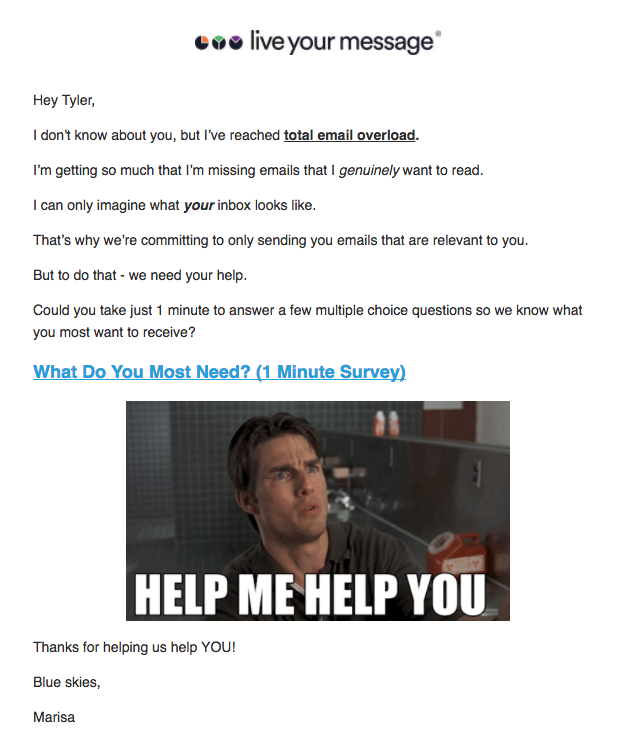In an era of personalization, a one-size-fits-all approach to email marketing doesn’t work anymore. E-commerce businesses and email marketers often have a lot of customer data, but they mostly fail to use that data to their full advantage. With an increasing number of businesses utilizing email marketing, it is necessary that as an email marketer, you implement new ways to keep your customers engaged.
Gone are the days when using the ‘first name’ of subscribers in the emails was considered to be one of the most successful tactics to improve conversions. Sending subscribers timely, behavioral emails that are relevant to their interests is necessary to keep them interested in your business.
Personalization and automation, when used together, work wonders. A research compilation shows that, according to Experian, brands that personalize promotional marketing emails experience 27% higher unique click rates and 11% higher open rates than those that do not personalize. It also states that triggered emails drive 624% higher conversion responses for the same number of sends as compared to “batch and blast” emails.
When it comes to creating personalized campaigns for your e-commerce emails, you need to follow few simple and sophisticated procedures to drive your email campaigns effectively.
Ask the Right Questions
For sending automated triggered emails, you need to collect data from your customers. An effective way to do this is by asking them to make certain preference choices that will help you in segmenting the data. When the customers subscribe to your emails, ask them their purpose of opting for your emails. The responses will give you insights that will lead you towards sending relevant and better-targeted emails.
Here is an example of an email from Marisa Murgatroyd, Founder of Live Your Message. In this email, she asks her email subscribers to complete a short survey, which will allow her to segment them based on their preferences and send them only emails that are relevant most relevant to them.

Build Customer Personas
Once you get responses from your customers, build customer personas out of the collected data. By understanding your customers and email subscribers better, you can develop more personalized experiences for them. This will help give your email subscribers a much more targeting and customized experience.
Consider Location and Time
Test your emails by location and time to determine what works best for you. Certain times of day prove to be better when it comes to sending emails. Your customers may be scattered across the world in different time zones and hence it is necessary that you cater to all of them. Customers might respond better to your emails when they are sent at a particular time of the day. Make sure you do A/B testing for your emails and find out the best time when the customers reach out to your emails and set your send time accordingly.
7 Types of Automated Emails Triggered by Subscriber Behavior
Once you’ve collected enough data to properly segment your email subscribers, it’s time to set up automated trigger emails based for specific segments and behaviors.
Here are 7 types of triggered emails that you can send to your customers:
1. Welcome Emails
Welcome emails are triggered to establish a connection with your newly joining subscriber. This is the first email you send to confirm the signup. It can help you filter your list by asking your subscribers about their preferences. You should preferably run a series of welcome emails; the first one as a pure welcome note and introducing your services, the second one asking about the subscribers’ preferences, and the next few emails about offers and discounts for their future purchase.
Take a look at this example of Welcome Email from Hootsuite. The email guides the subscriber to start using their online tool. This email is the first in their triggered series and is sent as soon as the customer opts in.

2. Abandoned Cart Emails
Abandoned cart emails are emails that are sent to customers who have added items to their cart but didn’t proceed to checkout. Highlighting the abandoned products and offering a discount or free shipping to proceed to checkout is a great way to make them complete the purchase.
Take a look at this email from Asics. They have highlighted one of the abandoned products by putting it up on the main banner and showing the rest of the items in the cart below. They have also displayed items for cross-selling, which increases the chances of the customer to revisit the website to make a purchase.
 3. Back in Stock Emails
3. Back in Stock Emails
Back in stock emails are the emails sent to customers who wanted to buy a particular product that was out of stock and has chosen to get notified when the item is back in stock. Sending an email that notifies the customer about the availability of the item/s is a great way to get them back to your website to make the purchase.
This email from Kauffmann Mercantile is a good example. This notice is a great tool and service to make your customers feel special.
 4. Price Drop Reminders
4. Price Drop Reminders
Price drop emails are sent to customers who left your online store or cart probably because of the price of certain products on which there is no discount. When the previously browsed products are available at a discounted price, it is good to notify the customers about it. It is a good opportunity to attract customers who were once interested in buying from you.
Take a look at this example from Target, which has notified the customers of the discounted new price of the products in their cart, along with other recommended products. This will convince the customer to make the purchase.
 5. Order Confirmation
5. Order Confirmation
After customers checkout and place an order, immediately send an order confirmation email to them, validating and thanking them for completing the purchase. This will help them recheck their order and make changes if necessary. Include a payment receipt and order summary to keep the transaction transparent. Also, give them options to track their order and give a feedback. You can also consider upselling, cross-selling or offering similar products.
Here is an example of an order confirmation email from Amazon. This particular purchase was for an ebook, and notice how Amazon recommends similar ebooks at the bottom of the email:

6. Order Follow-up Emails
Once your customer places an order from your website, you need to send order follow-up emails. Set up automatic follow-up emails that include relevant product recommendations and related product suggestions. These emails will also include order tracking details, order summary and payment details.
Check out this email from Etsy that informs the customer about the progress of the shipped order.
 7. Re-engagement Emails
7. Re-engagement Emails
Re-engagement emails focus on rejuvenating the bond with those subscribers and customers who haven’t opened your emails or haven’t purchased from you in a specific timeframe. Effective re-engagement emails induce the customers to revisit your website. You can send a series of emails to win back your disinterested customers and draw them towards buying from your website. You could also include special offers and discounts to entice your subscribers to revisit your website and make a purchase.
Here is an example of a re-engagement email from Pinkberry, offering their subscribers a free yogurt if they visit a Pinkberry location within 7 days:

Automated emails work best when they are personalized
Hyper-personalization is what will keep your email subscribers interested in your business. The next time you plan for your email campaigns, make sure you go beyond just adding their names in the emails. Creating personalized emails based on your subscribers’ interests and behaviors is the key to ensuring your automated email campaigns work effectively.
7 Ways to Personalize Automated Emails Based on Subscriber Action @emailmonks #emailmarketing Click To TweetKevin George is the Head of Marketing at EmailMonks, one of the fastest growing email design and coding companies that specializes in crafting beautiful email templates, PSD to HTML email conversion and free HTML email templates. He enjoys sharing his insights and thoughts on email marketing tips and best practices at his email marketing blog.






